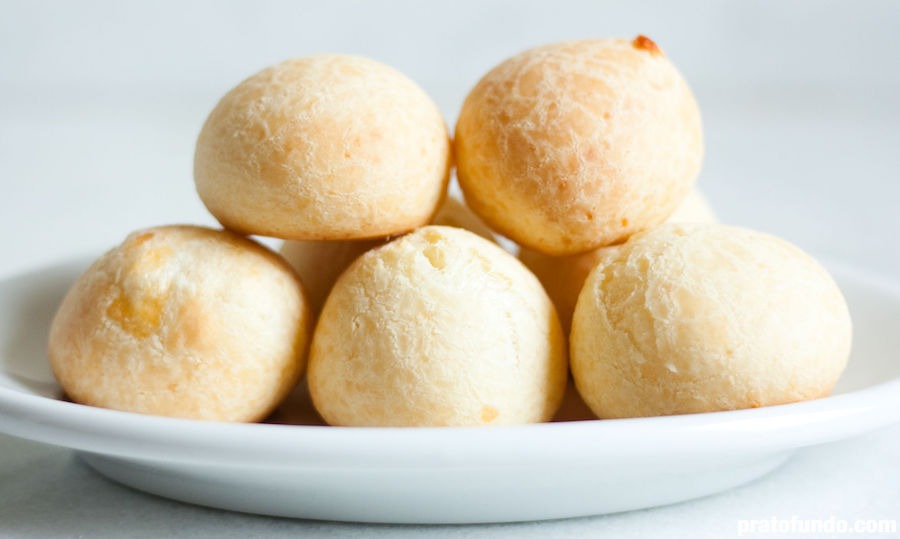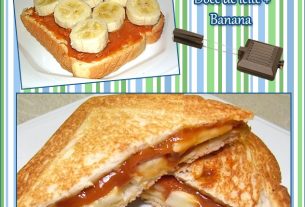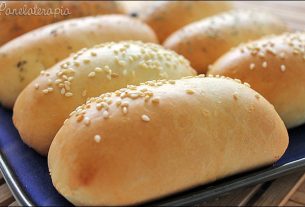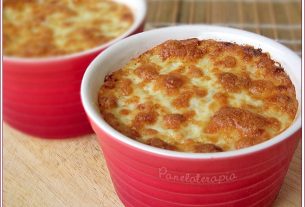At the time the original post was published, there was a flood of recipes for cheese bread in the community of foodblogs and until then, I hadn’t done it at home. In addition to the cassava and starch, they were ingredients far from me, which was actually good. I was curious and went to find out more about the ingredient: Sour, Sweet and Cassava Starch.
There are so many versions of this Minas Gerais delicacy that practically every family in Minas will have their own version. I ended up choosing the winning recipe from a competition held on TV, and if it won the prize… it couldn’t hurt to try.
This time, I used colonial cheese which is saltier than standard mines (at least, I thought so). Therefore, the amount of salt varies, read the note at the end. I wanted to use a different cheese, so I switched. In fact, one not two. The parmesan this time didn’t come from the packet, I bought a piece (national). If you can use Canastra cheese you won’t regret it, it’s an excellent cheese. And, ideal for the recipe.
I recommend using a planetary mixer with a hook whisk. It’s a heavy dough, normal mixers can’t handle the pressure (I’ve already tested it and it almost burned). If you don’t have one and don’t want to risk burning the equipment, hit your hand.
It freezes both raw bread (already separated into balls) and baked bread extremely well. I recommend freezing raw, the results are better.
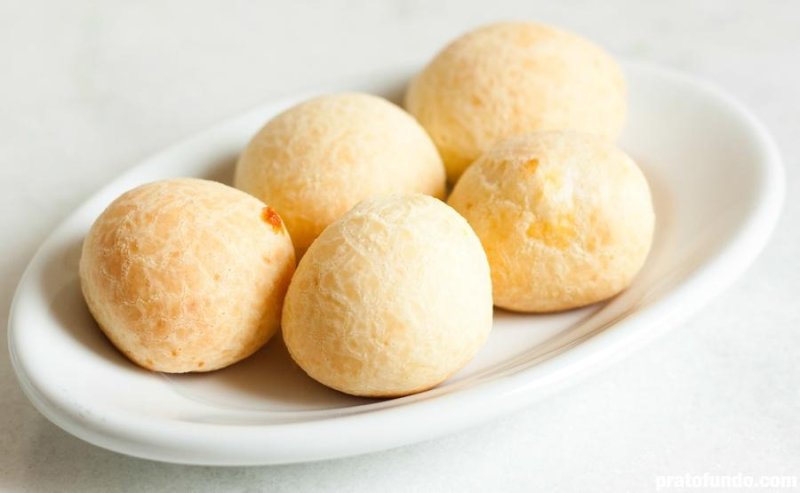
Traditional Cheese Bread Recipe
Makes: 40 – 50 units, depending on size.
- 500 g cassava starch (sweet powder)
- 300 g sour tapioca
- 440 g grated standard Minas cheese (thin OR colonial cheese)
- 220 g grated Parmesan cheese
- 550 mL leite integral
- 110 mL vegetable oil (neutral flavor)
- 5 eggs
- 25 g refined salt (quantity depends on the cheese used)
- 30 g butter without salt
1 cup: 250mL | 1 tablespoon: 15mL.
- Sift all the dry ingredients: starch, starch and salt. Mainly the sour one, there were several hard granules in the middle, and in the starch there were some strange flakes. Reserve.
- In a pan, mix whole milk, oil, butter. Bring to a boil and bring to a boil.
- Then, add to the dry ingredients slowly and stirring. Be careful, it will be hot. This step is called “scalding” the cassava starch.
- To beat, you can do it manually with a large spoon or spatula. Ideally, it should be in a planetary mixer. It’s a heavy mass.
- Continue beating until it cools. It should be very uniform, soft and uniform. The best comparison is with biscuit dough.
- When it is warm, that is, you can place your hand without burning yourself. It’s time to add the eggs. It seems like they won’t be absorbed, but they will. Calmly and patiently, add one by one, mixing and waiting for it to be absorbed by the dough. Then the cheeses. It looks like a lot of cheese, but the dough holds up and absorbs it all.
- The dough is sticky when ready, so to make the balls you need to oil your hands.
- Heat the oven to 180ºC. Grease the baking tray, distribute the balls (leaving space between), bake at 180ºC for 25-30 minutes.
- Parmesan cheese: If you buy the piece, I suggest processing them instead of grating them. It’s easier.
- Standard colonial/minas cheese: I suggest you grate it unlike parmesan. As they are softer cheeses, when processed they can turn into a compact mass and can interfere when adding to the dough.
- Sal: If you use a saltier cheese, such as colonial, the amount of salt will decrease significantly. In the case of colonial, the amount goes to 16g of salt. But I recommend that you add it little by little and taste the dough.
- Adapted: Cheese Bread Uai, Sô!
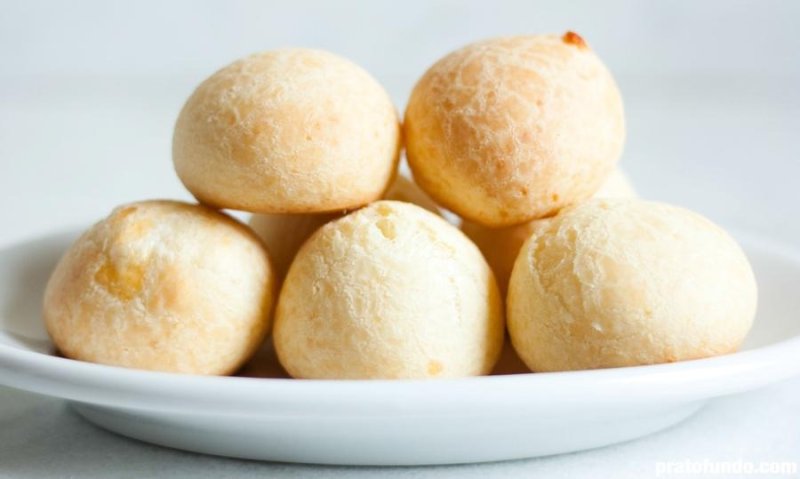

Sign up for our newsletter and stay up to date with exclusive news
that can transform your routine!
Warning: Undefined array key "title" in /home/storelat/public_html/wp-content/plugins/link-whisper-premium/templates/frontend/related-posts.php on line 12
Warning: Undefined array key "title_tag" in /home/storelat/public_html/wp-content/plugins/link-whisper-premium/templates/frontend/related-posts.php on line 13

